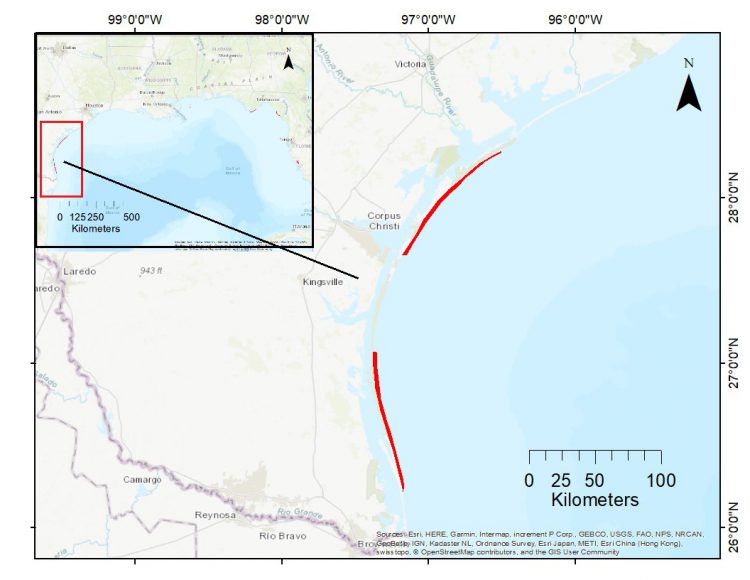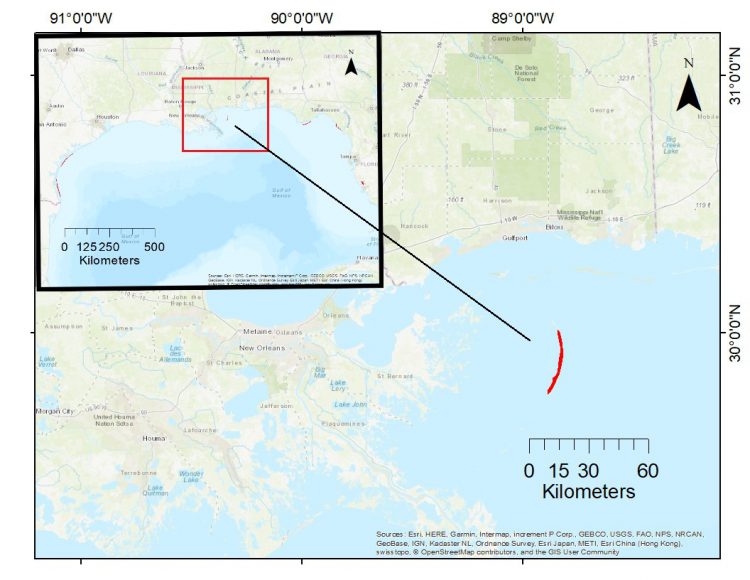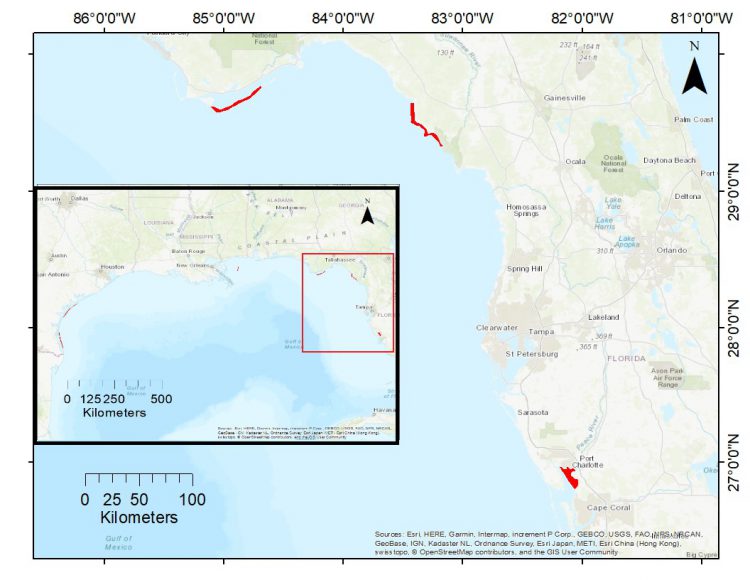Turtlegrass
Full Title: Gulf-wide assessment of habitat use and habitat-specific production estimates of nekton in turtlegrass (Thalassia testudinum)
This project assessed the use of turtlegrass by finfish and shellfish across the northern Gulf Mexico and evaluated the specific ways seagrass supports blue crabs, a commercially important species.
The Team: Kelly M. Darnell (Lead Investigator, The University of Southern Mississippi, kelly.darnell@usm.edu), Zachary Darnell (The University of Southern Mississippi), Delbert L. Smee (Texas A&M University-Corpus Christi), Charles W. Martin (University of Florida), Bradley Furman (Florida Fish and Wildlife Conservation Commission), and Margaret O. Hall (Florida Fish and Wildlife Conservation Commission)
Technical Monitor: Caitlin Young (caitlin.young@noaa.gov)
Federal Program Officer/Point of Contact: Frank Parker (frank.parker@noaa.gov)
This project began in June 2017 and ended in May 2022.
Award Amount: $992,136
Why it matters: Seagrass beds serve as habitat for many commercially and recreationally important finfish and shellfish during some stage of their life. In the northern Gulf of Mexico, turtlegrass, a type of seagrass, is a critical foundation species that provides energy for food webs and shelter and foraging grounds for many species. In order for fisheries managers to understand how changing seagrass abundance impacts fisheries, we need to know how turtlegrass supports finfish and shellfish species in the Gulf of Mexico.
What the team did: This project is an assessment of turtlegrass habitat use and an evaluation of the specific ways it supports blue crabs. The researchers will determine the abundance, diversity, age, and mix of juvenile and adult animals that use turtlegrass as habitat in Florida, Louisiana, and Texas. Additionally, they will measure the relationships in these three states between blue crab growth and mortality and characteristics of the turtlegrass such as plant density and height. Finally, they will develop separate statistical models for Florida, Louisiana, and Texas that will estimate blue crab production in turtlegrass based on crab abundance, growth, and mortality data.
Summary of Outcome: The goals and objectives of this project were twofold: (1) to conduct a management-driven, Gulf of Mexico-wide assessment of the use of turtlegrass as habitat by nekton and to evaluate the support provided to blue crabs, and (2) to assess the impact of a large-scale hurricane disturbance on turtlegrass ecosystems in the northern Gulf of Mexico. Through field intensive sampling and experiments, the goals and objectives were executed by the project team in collaboration with an Expert Advisory Panel comprised of managers and other end users from across the U.S. Gulf of Mexico. This project advanced the state of knowledge on habitat use in seagrass ecosystems and the response to disturbances such as hurricanes, and yielded data and findings that have been made publicly available for widespread use by others. Through its execution, this project also generated baseline ecosystem data for six sites spanning the U.S. Gulf of Mexico, including data for Charlotte Harbor, FL immediately before the onset of a widespread macroalgal bloom that led to a large-scale seagrass die-off and ecosystem shift in the area. In addition, this project provided a forum for habitat and fishery managers and end users to discuss issues at the integrated ecosystem level, rather than as compartmentalized components of the ecosystem. The execution of this project and the results that were generated showcase the value of sampling and conducting experiments over a regional scale to detect broad patterns, but also highlights the importance of understanding local processes to identify drivers and mechanisms.
From the seminar “Gulf-wide assessment of habitat use and habitat-specific production estimates of nekton in turtlegrass (Thalassia testudinum)”
Presenter: Dr. Kelly Darnell, The University of Southern Mississippi
Other Resources
Darnell, Kelly M.; Darnell, M. Zachary; Smee, D. Lee; Martin, Charles W.; Hall, Margaret O.; Furman, Bradley (2025). NOAA RESTORE Science Program: Gulf-wide assessment of habitat use and habitat-specific production estimates of nekton in turtlegrass (Thalassia testudinum): Nekton and primary producer stable isotopes in turtlegrass-dominated seagrass beds in the northern Gulf of America, 2018-05-23 to 2018-10-03 (NCEI Accession 0304846). NOAA National Centers for Environmental Information. Dataset. https://doi.org/10.25921/9b8j-zn57.
Darnell, Kelly M.; Darnell, M. Zachary; Smee, D. Lee; Martin, Charles W.; Hall, Margaret O.; Furman, Bradley (2025). NOAA RESTORE Science Program: Gulf-wide assessment of habitat use and habitat-specific production estimates of nekton in turtlegrass (Thalassia testudinum): Blue crab growth and mortality rates, 2018-05-14 to 2018-09-14 (NCEI Accession 0305475). NOAA National Centers for Environmental Information. Dataset. https://doi.org/10.25921/tew2-ej83
 Official websites use.gov
A .gov website belongs to an official government organization in the United States.
Official websites use.gov
A .gov website belongs to an official government organization in the United States.
 Secure .gov websites use HTTPS
A lock or https:// means you’ve safely connected to the .gov website. Share sensitive information only on official, secure websites.
Secure .gov websites use HTTPS
A lock or https:// means you’ve safely connected to the .gov website. Share sensitive information only on official, secure websites.


